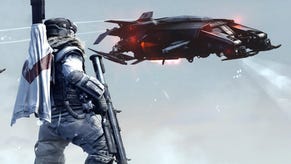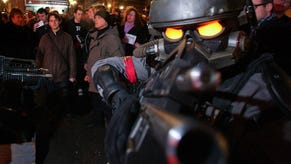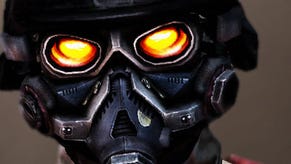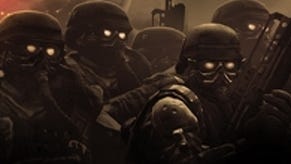Tech Analysis: Killzone 3
Performance, lag and even 3D analysis.
Almost two years on from release, Killzone 2 remains one of the most technologically advanced shooters available on console. According to Guerrilla Games, the game runs using just 60 per cent of the PlayStation 3's SPU satellite processors. Factoring in this "leftover" power, combined with lessons learned in developing Killlzone 2, hopes are high that the sequel will prove to be a significant advance over its predecessor in terms of both tech and gameplay.
Of course, there is something of a danger in talking about how much a game stresses the hardware it's running on. As Criterion's tech guys pointed out some time ago, it's practically impossible to max out a console. Programming techniques improve, code becomes more efficient, and games radically improve simply by virtue of the developers becoming more au fait with the consoles they're working on.
However, Guerrilla's SPU claims are measured in terms of spare cycles. The picture below, ripped from the developer's 2009 Montreal International Game Summit presentation, shows how processor time is allocated across the 33ms the developer budgets for each frame. See all that white space? That's unused SPU time. So in moving on to Killzone 3, the opportunity for improvement is twofold: not only can Guerrilla improve scheduling of jobs across the SPUs, they can also introduce newer, more efficient systems to improve performance still further.

We've been aching to talk about Killzone 3 for quite some time. We've played through the entirety of the E3 demo in both 2D and 3D modes, but without the OK from Sony to run our own assets, we elected to hold off proper coverage... until now. This Digital Foundry analysis covers off both the limited release public beta and also includes our thoughts on the remarkable E3 reveal and its intriguing support for full stereoscopic 3D.
Let's kick off with a look at basic performance. Killzone 2 ran at native 720p with triple-buffer implemented to ensure a complete lack of screen-tear along with a more steady level of performance when frames were dropped. However, it's fair to say that the game dropped down from its target 30FPS very often and this is one of the key improvements we would want to see from Killzone 3. We're pretty limited in what we can actually measure in the beta code since it is multiplayer only, but we should be able to get a rough idea of general performance. It's also worth pointing that that we would expect to see some level of optimisation in the push towards the final release, but, equally, general performance of what we see here is very close indeed to the E3 demo, which we played at length in both 2D and 3D.
Here's a montage of multiplayer action from across three separate levels.
There's a definite sense that Killzone 3 runs significantly more smoothly than its predecessor, with the only impacts to frame-rate occurring during significant explosions and heavier-than-normal use of alpha. However, it is important to note that most of our battles in the multiplayer arena were limited to around eight or nine active players, and the scale of the levels is such that the intensity of the firefights was fairly muted. Elsewhere, other Killzone 3 beta participants have voiced their concerns about the overall performance and fluidity of the game.
In order to give the tech much more of a workout, we re-ran the tests by using the bot support included in the beta, and whacking up the number of participants in the fracas to the maximum 16 (15 bots, plus the player). There's a chance that upping the AI to the maximum, beyond the default seven CPU participants, could introduce significant load of course, but then we can imagine the single-player campaign handling that many AI entities too.
Suffice to say that the overall hit to performance was significant:
Of course, this is beta code (indeed, the screen says it's actually "alpha", a step-up from the "pre-alpha" labelling on the E3 demo) so we would hope that the game will be significantly smoother when it actually ships.









